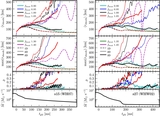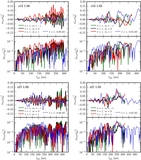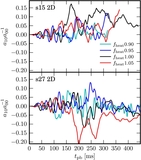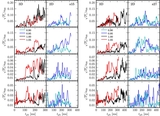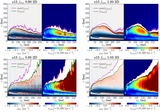Image Details
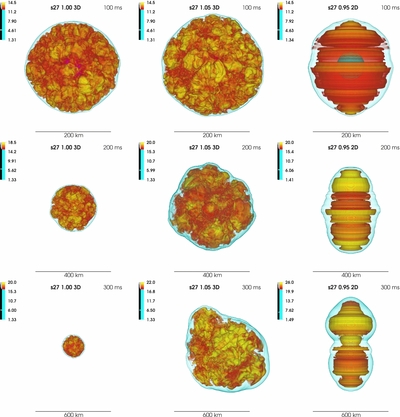
Caption: Figure 2.
Volume renderings of entropy, in k B baryon −1, for three different s27 simulations at three different postbounce times. The left column shows s27 f heat 1.00 3D, the middle column shows s27 f heat 1.05 3D, and the right column shows s27 f heat 0.95 2D. The 2D simulation data are wrapped around the axis, reflecting the assumption of axisymmetry made in 2D simulations. Time increases from top to bottom. The colormap and transfer function are indicated in the top left of each panel, and the postbounce time is displayed in the top right. The spatial scale also increases from top to bottom. The shock surface is visible in blue. High-entropy buoyant convective plumes are evident. Model s27 f heat 1.00 3D does not explode, and the shock recedes on these timescales. Model s27 f heat 1.05 3D is in the process of exploding. The 2D simulation clearly presents greater explosion asymmetry, in a characteristic bipolar fashion. At these stages of evolution the failed explosion case, s27 f heat 1.00 3D, does not show evidence of substantial SASI development. The SASI in this model grows to large amplitudes only after 300 ms postbounce.
Copyright and Terms & Conditions
© 2014. The American Astronomical Society. All rights reserved.


